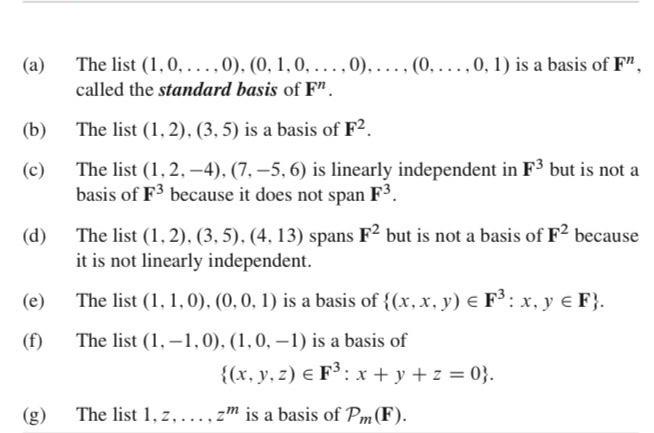Answered step by step
Verified Expert Solution
Question
1 Approved Answer
(a) (b) (c) The list (1,0,..., 0), (0, 1, 0, . . . , 0), . . . , (0, . . . ,

(a) (b) (c) The list (1,0,..., 0), (0, 1, 0, . . . , 0), . . . , (0, . . . , 0, 1) is a basis of F", called the standard basis of Fn. The list (1, 2), (3, 5) is a basis of F2. The list (1,2,-4), (7,-5, 6) is linearly independent in F but is not a basis of F3 because it does not span F. (d) The list (1,2). (3.5). (4, 13) spans F2 but is not a basis of F because it is not linearly independent. The list (1, 1,0), (0, 0, 1) is a basis of {(x, x, y) F : x, y F}. The list (1,-1,0), (1, 0, -1) is a basis of (e) (f) {(x, y, z) F: x + y + z = 0}. The list 1, 2,..., zm is a basis of Pm (F).
Step by Step Solution
★★★★★
3.35 Rating (155 Votes )
There are 3 Steps involved in it
Step: 1
A The list 1 0 0 0 1 0 0 0 0 1 is a basis of F called the standard basis of F This list forms a basis of F because it is linearly independent and spans F Each vector in this list is linearly independe...
Get Instant Access to Expert-Tailored Solutions
See step-by-step solutions with expert insights and AI powered tools for academic success
Step: 2

Step: 3

Ace Your Homework with AI
Get the answers you need in no time with our AI-driven, step-by-step assistance
Get Started


